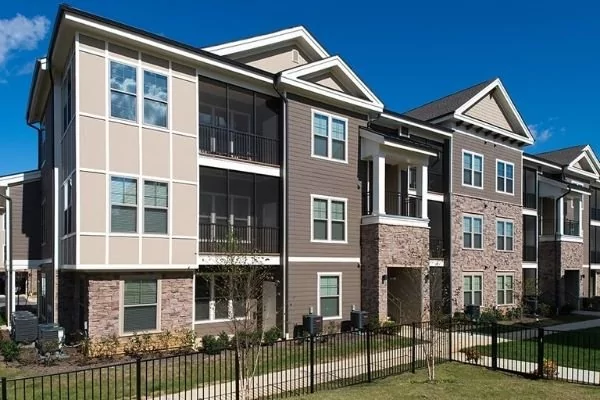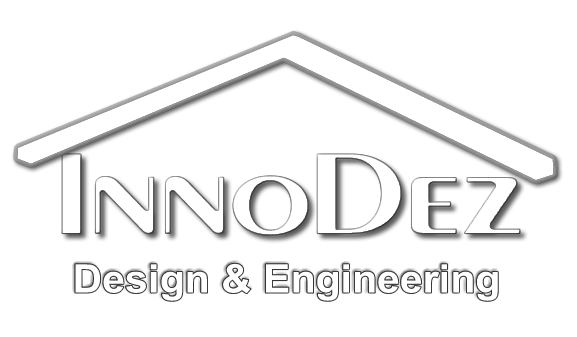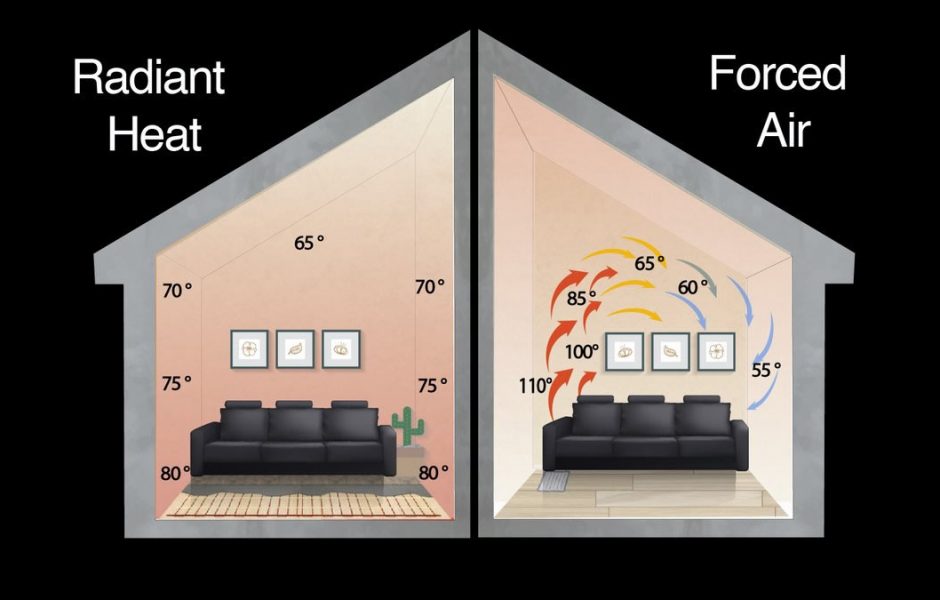Introduction An average homeowner in the US spends around 45% of the total utility bills heating occupied spaces within their
Welcome to the world of multi-family housing developments! If you’re embarking on a project in this space, it’s essential to familiarize yourself with Title 24 compliance for MEP (mechanical, electrical, and plumbing) systems. This comprehensive roadmap will ensure your development meets the required energy efficiency standards.
In this article, we will explore the ins and outs of Title 24 compliance specifically for multi-family housing developments. We’ll break down the key requirements, guidelines, and best practices to help you successfully navigate this complex landscape. Whether you’re an architect, developer, or contractor, understanding Title 24 compliance is crucial for ensuring the sustainability and legality of your project.
From lighting and ventilation systems to HVAC and insulation, every aspect of MEP plays a significant role in achieving Title 24 compliance. By aligning your project with these regulations, you’ll not only contribute to a greener environment but also potentially save on energy costs in the long run.
Join us as we delve into the world of MEP and Title 24 compliance, providing you with the roadmap you need to steer your multi-family housing development toward success.

What is Title 24 Compliance?
Title 24 compliance refers to adhering to the energy efficiency standards outlined in Title 24 of the California Code of Regulations. This set of regulations, also known as the California Energy Code, aims to reduce energy consumption in buildings and promote sustainable practices. Compliance with Title 24 is mandatory for all new construction and renovations in California, including multi-family housing developments.
The code covers various aspects of building design and operation, including lighting, ventilation, HVAC systems, insulation, and more. It sets specific requirements for each of these areas to ensure buildings are energy-efficient and environmentally friendly. By complying with Title 24, developers contribute to a more sustainable future while also potentially benefiting from reduced energy costs.
Achieving Title 24 compliance involves careful planning, design, and implementation of MEP systems. Let’s dive deeper into why compliance is crucial, and the specific energy efficiency standards outlined in Title 24 for multi-family housing developments.
Importance of Title 24 Compliance for Multi-Family Housing Developments
Title 24 compliance is of paramount importance for multi-family housing developments. Not only is it a legal requirement, but it also offers numerous benefits for developers and occupants alike.
First and foremost, compliance ensures that your development meets the necessary energy efficiency standards. By incorporating energy-efficient MEP systems, you significantly reduce energy consumption and carbon footprint. This not only helps combat climate change but also demonstrates your commitment to sustainability.
Moreover, compliance with Title 24 can lead to long-term cost savings. Energy-efficient systems result in reduced utility bills, which can translate into substantial savings over time. Additionally, many utility companies offer incentives, rebates, or financing options for projects that meet or exceed Title 24 requirements. Taking advantage of these programs can further enhance the financial viability of your development.
Furthermore, building with energy efficiency in mind can enhance the overall comfort and livability of the multi-family housing units. Proper insulation, efficient heating and cooling systems, and adequate ventilation contribute to a healthier indoor environment, ensuring the well-being of residents.
By prioritizing Title 24 compliance in your multi-family housing development, you demonstrate your commitment to sustainable building practices, cost savings, and occupant comfort. Now, let’s explore the specific energy efficiency standards outlined in Title 24 for MEP systems.
Understanding the Energy Efficiency Standards of Title 24
Title 24 sets forth energy efficiency standards that must be met or exceeded in various areas of MEP systems in multi-family housing developments. Let’s delve into some of the key requirements for each system:
Lighting Systems
Title 24 places significant emphasis on energy-efficient lighting systems. The code mandates the use of high-efficacy lighting fixtures that consume less energy while providing adequate illumination. Additionally, automatic lighting controls, such as occupancy sensors and daylight harvesting systems, are required to minimize energy waste.
Ventilation Systems
Proper ventilation is crucial for maintaining indoor air quality and ensuring occupant comfort. Title 24 specifies ventilation rates based on the square footage and occupancy of the multi-family housing units. Developers must ensure that ventilation systems are designed and installed to meet these requirements, promoting adequate airflow without excessive energy consumption.
HVAC Systems
Heating, ventilation, and air conditioning (HVAC) systems play a significant role in energy consumption within multi-family housing developments. Title 24 outlines specific requirements for HVAC equipment efficiency, duct insulation, and system controls. Developers must select energy-efficient HVAC systems and ensure they are properly sized and installed to meet the code’s standards.
Insulation
Proper insulation is essential for minimizing heat transfer and maintaining comfortable indoor temperatures. Title 24 specifies insulation requirements for walls, roofs, floors, and windows. Developers must carefully select insulation materials and ensure they are installed correctly to meet the code’s thermal performance criteria.
Water Heating Systems
Title 24 also addresses energy efficiency in water heating systems. The code imposes requirements on the insulation of hot water pipes and storage tanks to minimize heat loss. Additionally, the use of energy-efficient water heaters and fixtures is encouraged to reduce water and energy consumption.
By understanding and complying with these energy efficiency standards, developers can ensure their multi-family housing developments meet the requirements of Title 24. The next section will explore strategies for achieving compliance in MEP systems.
The Role of MEP (Mechanical, Electrical, and Plumbing) Systems in Title 24 Compliance
MEP systems are integral to achieving Title 24 compliance in multi-family housing developments. These systems encompass a range of components, including lighting, ventilation, HVAC, insulation, and water heating. By optimizing the design, installation, and operation of MEP systems, developers can ensure their projects meet the energy efficiency standards outlined in Title 24.
One of the key considerations in MEP design is selecting energy-efficient equipment and components. For lighting systems, developers should opt for high-efficacy fixtures, such as LED lights, which consume less energy while providing ample illumination. Additionally, the use of automatic lighting controls, such as occupancy sensors and timers, can further reduce energy waste by ensuring lights are only on when needed.
In terms of ventilation systems, developers should carefully design and size the system to meet the code’s requirements for airflow and air quality. Properly located and sized intake and exhaust vents, along with energy-efficient fans, can help achieve optimal ventilation without excessive energy consumption.
When it comes to HVAC systems, selecting equipment with high energy efficiency ratings, such as ENERGY STAR certified units, is crucial. Proper sizing, installation, and regular maintenance of HVAC systems are also essential for maximizing efficiency and ensuring occupant comfort.
Insulation plays a significant role in preventing heat transfer and maintaining comfortable indoor temperatures. Developers should carefully select insulation materials with high R-values and ensure they are installed correctly to meet the code’s requirements. Additionally, sealing any air leaks in the building envelope can further enhance energy efficiency.
In water heating systems, developers should focus on minimizing heat loss through proper insulation of pipes and storage tanks. The use of energy-efficient water heaters, such as tankless or heat pump models, can significantly reduce energy consumption. Installing low-flow fixtures and promoting water conservation practices further contribute to overall energy efficiency.
By implementing these strategies and ensuring proper design, installation, and maintenance of MEP systems, developers can achieve Title 24 compliance in multi-family housing developments. However, there are common challenges that can arise during the compliance process. Let’s explore some of these challenges and the corresponding solutions.
Common Challenges and Solutions in Meeting Title 24 Compliance
While striving for Title 24 compliance, developers may encounter various challenges. However, with careful planning and the right approach, these challenges can be overcome. Let’s explore some common challenges and their corresponding solutions:
1. Limited Space for MEP Systems
Multi-family housing developments often have limited space available for MEP systems. This can make it challenging to design and install energy-efficient equipment and components. However, creative solutions such as compact equipment, strategic placement, and efficient ductwork design can help optimize space utilization without compromising energy efficiency.
2. Cost Constraints
Cost constraints are a common challenge in any construction project. Investing in energy-efficient MEP systems may require an upfront investment that developers may be hesitant to make. However, it’s important to consider the long-term cost savings and potential incentives offered for complying with Title 24. Conducting a cost-benefit analysis can help demonstrate the financial viability of energy-efficient solutions.
3. Lack of Awareness and Expertise
Navigating the complexities of Title 24 compliance requires knowledge and expertise. Developers may lack the necessary awareness of the code’s requirements or the technical expertise to implement energy-efficient MEP systems. Hiring an MEP consultant who specializes in Title 24 compliance can help overcome this challenge. These consultants can provide guidance, conduct energy audits, and ensure the project meets all necessary standards.
4. Changing Code Requirements
Title 24 is periodically updated to incorporate new technologies and advancements in energy efficiency. Staying up to date with the latest code requirements can be challenging. However, developers can overcome this challenge by regularly consulting with MEP professionals, attending industry conferences, and staying informed about code updates through reliable sources.
By proactively addressing these challenges and implementing the corresponding solutions, developers can ensure their multi-family housing developments meet Title 24 compliance requirements. The next section will explore the benefits of complying with Title 24.
Benefits of Title 24 Compliance for Multi-Family Housing Developers
Complying with Title 24 offers numerous benefits for multi-family housing developers. Let’s explore some of the key advantages:
1. Environmental Sustainability
Title 24 compliance promotes environmental sustainability by reducing energy consumption and greenhouse gas emissions. By incorporating energy-efficient MEP systems, developers contribute to a greener future and help combat climate change. This commitment to sustainability can also enhance the reputation of the development, attracting environmentally conscious tenants and investors.
2. Cost Savings
Energy-efficient MEP systems result in reduced energy consumption, leading to long-term cost savings. By investing in energy-efficient equipment and components upfront, developers can significantly lower utility bills for their multi-family housing developments. Additionally, taking advantage of incentives, rebates, or financing options offered by utility companies can further enhance cost savings.
3. Enhanced Marketability
Title 24 compliance enhances the marketability of multi-family housing developments. With growing awareness and demand for sustainable living spaces, potential tenants and buyers are increasingly seeking energy-efficient buildings. By highlighting Title 24 compliance in marketing materials, developers can attract a wider audience and potentially command higher rents or sale prices.
4. Improved Occupant Comfort
Energy-efficient MEP systems contribute to improved occupant comfort. Proper insulation, ventilation, and HVAC systems ensure stable indoor temperatures, optimal air quality, and reduced noise levels. This creates a healthier and more comfortable living environment for residents, leading to increased tenant satisfaction and retention.
5. Regulatory Compliance
Complying with Title 24 ensures that multi-family housing developments meet the necessary regulatory requirements. This mitigates the risk of legal penalties, delays, and potential disputes. By demonstrating compliance, developers can instill confidence in investors, lenders, and regulatory authorities, facilitating smoother project approvals and financing.
By embracing Title 24 compliance, multi-family housing developers can enjoy these benefits while contributing to a more sustainable future. However, achieving compliance requires expertise and guidance. Let’s explore the role of hiring an MEP consultant in the compliance process.
Hiring an MEP Consultant for Title 24 Compliance
Navigating the complexities of Title 24 compliance can be challenging, especially for developers without expertise in MEP systems. Hiring an MEP consultant who specializes in Title 24 compliance can streamline the process and ensure the development meets all necessary requirements.
An MEP consultant brings valuable knowledge and experience to the table. They can assess the project’s specific needs, conduct energy audits, and recommend energy-efficient solutions tailored to the development. They can also guide the design and implementation of MEP systems, ensuring compliance with Title 24.
Additionally, an MEP consultant can assist with energy modeling and simulations, helping developers optimize energy efficiency while identifying potential cost savings. They can also provide ongoing support during construction and post-occupancy to ensure the development operates as intended and maintains compliance.
When hiring an MEP consultant, it’s important to choose a reputable and experienced professional. Look for consultants with a track record of successful Title 24 compliance projects and positive client testimonials. Collaborating closely with the consultant and establishing clear communication channels will facilitate a smooth compliance process.
Conclusion
Title 24 compliance is of utmost importance for multi-family housing developments. By understanding and adhering to the energy efficiency standards outlined in Title 24, developers can create sustainable, cost-effective, and comfortable living spaces. From lighting and ventilation to HVAC and insulation, every aspect of MEP plays a crucial role in achieving compliance.
Navigating the complexities of Title 24 can be challenging, but with the right strategies, solutions, and expertise, developers can successfully meet the requirements. By embracing Title 24 compliance, developers contribute to a greener future, enjoy long-term cost savings, enhance marketability, and ensure regulatory compliance.
Whether you’re an architect, developer, or contractor, it’s essential to prioritize Title 24 compliance in your multi-family housing development. Consider hiring an MEP consultant to guide you through the compliance process and optimize energy efficiency. Together, we can build a sustainable future, one multi-family housing development at a time.




About Author
Xhuljo Jakup